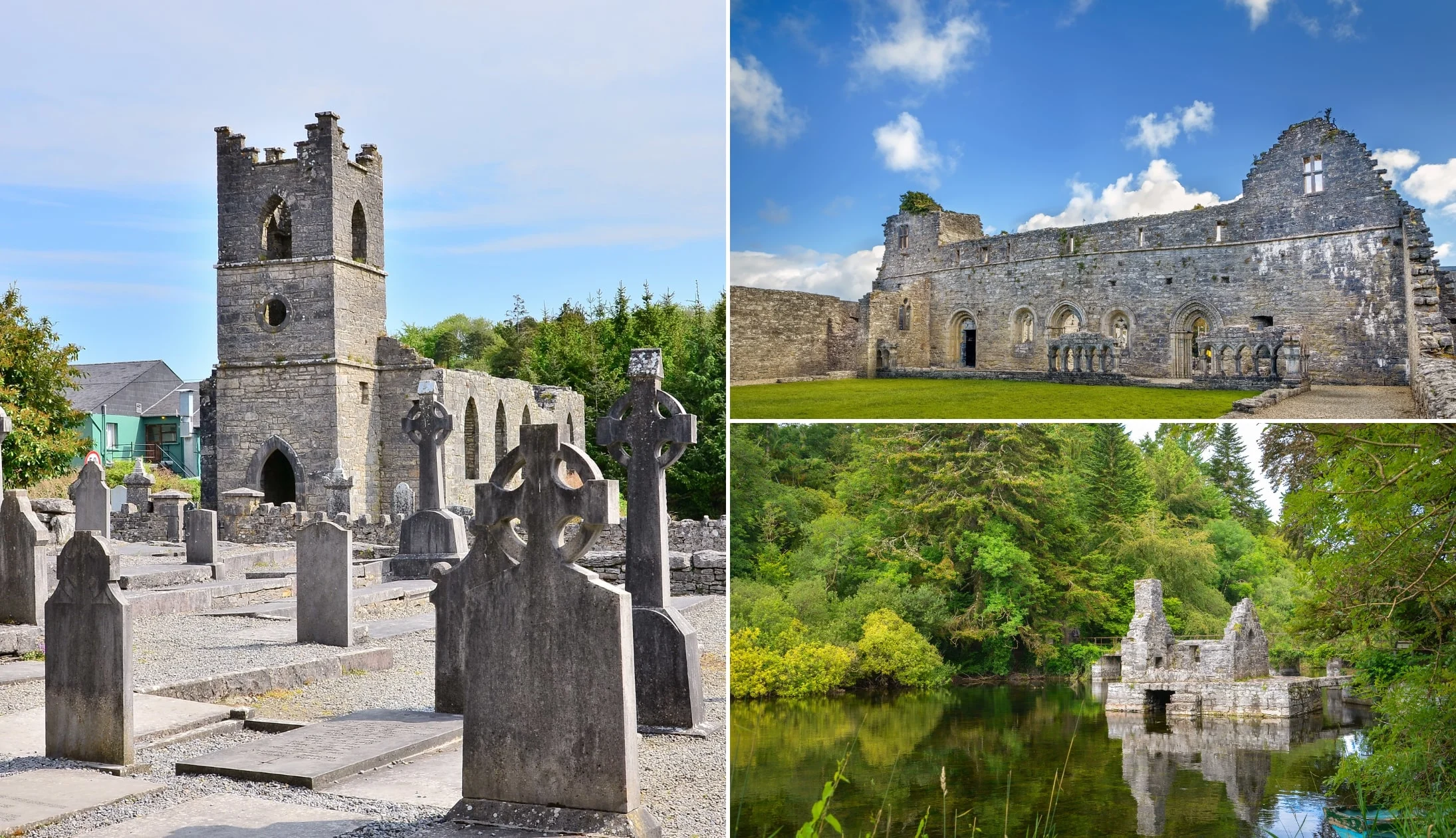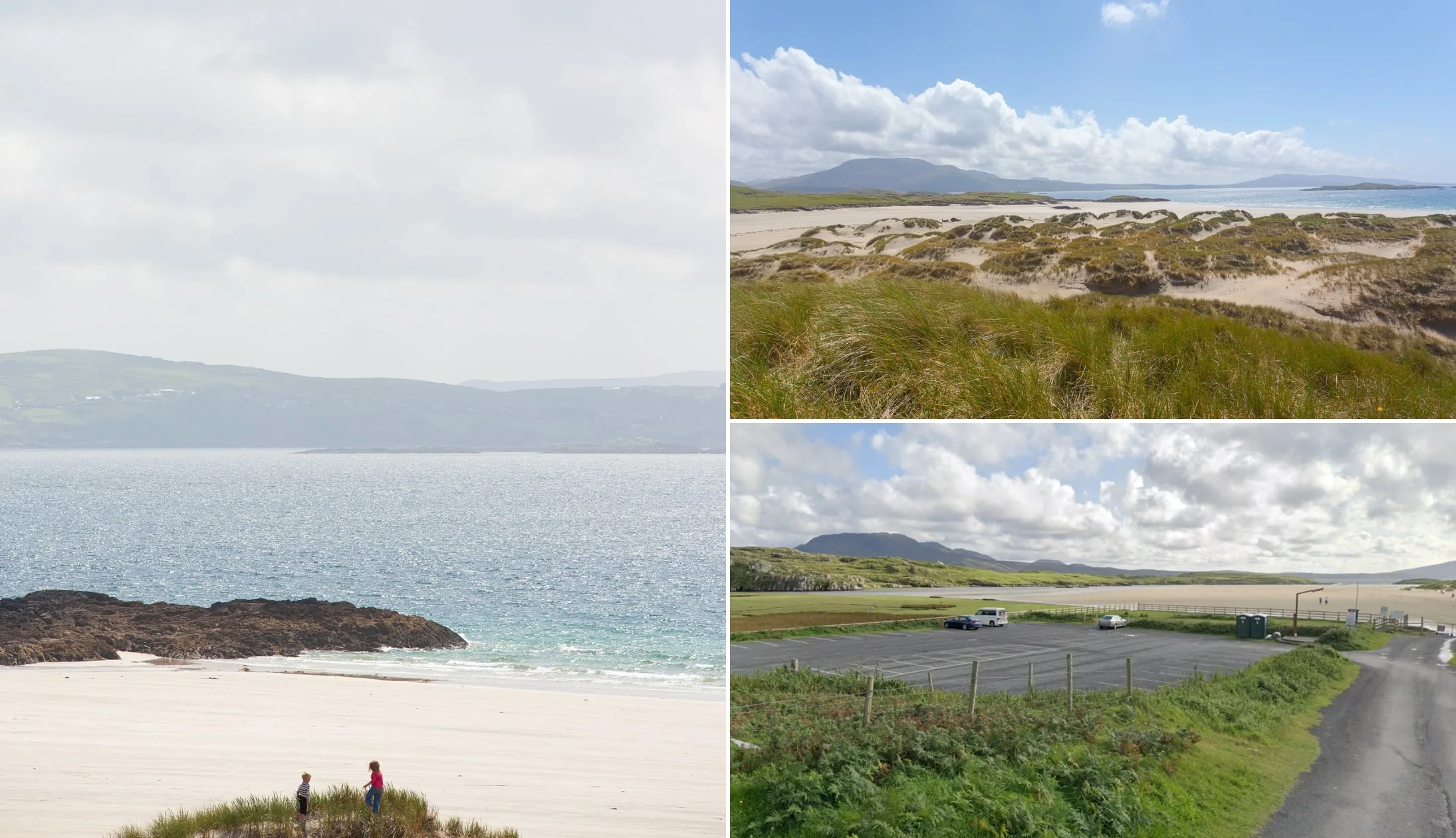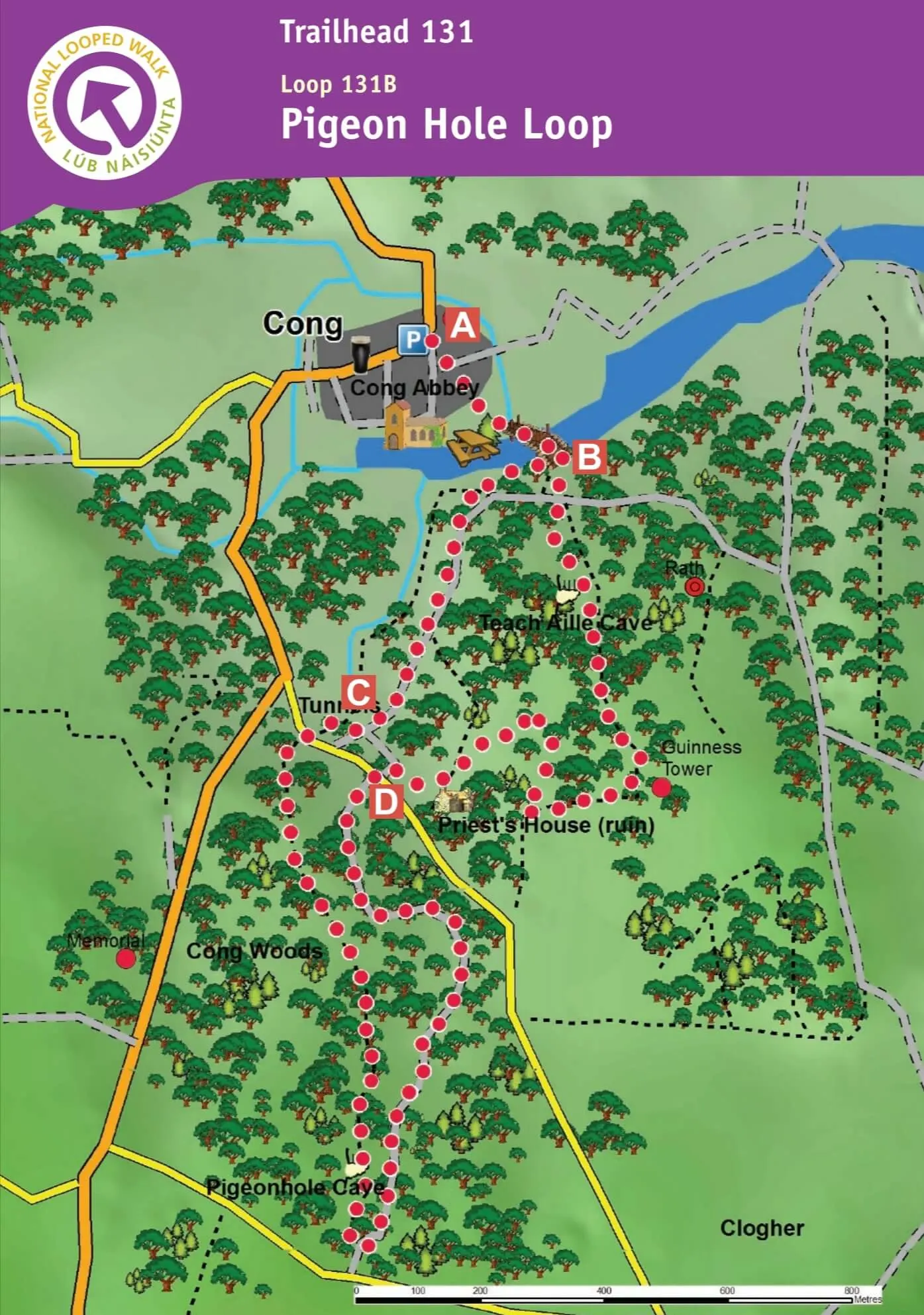Pigeon Hole Cave in Cong is shrouded in myth and folklore.
If you’ve explored Cong over the last 7 or so years, the chances are you’ll have made the journey down its narrow steps and into its dark interior.
However, while it was once one of the more popular things to do in Cong, the cave is now blocked off for safety reasons.
In the guide below, you’ll find info on the legend attached to it along with the Pigeon Hole Loop walk.
Some quick need-to-knows about Pigeon Hole Cave

Photos via Shutterstock
Although a visit to Pigeon Hole Cave is fairly straightforward, there are a few need-to-knows that’ll make your visit that bit more enjoyable.
1. Location
Pigeon Hole Cave is located just outside Cong village inside Pigeon Hole Woods. While Cong village is in County Mayo, the cave is actually inside County Galway.
2. Parking
There’s a small car park directly next to Cong Abbey with enough spaces for 5-6 cars, otherwise, there is limited roadside parking along Abbey Street next to the Tourist Information Centre. If these are full, you can park in Cong Car Park which is a 5-minute walk from the centre of Cong (see parking on Google Maps here and here).
Another option is to park closer to the cave to avoid having to walk the entire Pigeon Hole Loop. From the parking area you can walk the short distance through the Pigeon Hole Woods to the cave (see parking on Google Maps here).
3. The walk down is steep
To get to Pigeon Hole Cave, you’ll need to traverse down a steep and sometimes narrow stone staircase. While there are handrails along one side, we would advise wearing appropriate footwear and taking your time down as the way can be slippery with mud, rain, and fallen leaves.
4. Steeped in folklore
According to Irish folklore, the subterranean river in Pigeon Hole Cave is home to a “fairy trout” which evades capture. The fish, once a woman who lost her fiance, now lives in the river waiting for her true love.
5. 2023 update: Cave blocked off
The entrance to Pigeon Hole Cave is now blocked off due to safety reasons. Whether it’ll open up in years to come is anyone’s guess.
About Pigeon Hole Cave

Photos via Shutterstock
Pigeon Hole Cave (‘Poll na gColum’) is a mysterious cave close to Cong village. It gets its name because it is a popular place for nesting pigeons.
To get to the limestone cave, you’ll need to descend down a steep stone stairway, through the mossy boulders, and into the main cavern below which is over 12 feet wide.
The cave has been formed over the years due to acidic rainwater slowly eroding away the limestone rock.
Deep in the cave, there’s a flowing stream (which is shrouded in legend) that transports water from Lough Mask to Lough Corrib.
Things to do at Pigeon Hole Cave
There are a handful of things to do in and around Pigeon Hole Cave (just keep in mind that it’s no longer safe to walk down to it).
It’s well worth tackling the looped stroll here after taking some time to discover the folklore behind the cave.
1. The Pigeon Hole Loop
The Pigeon Hole Loop is an easy 4.7km red way-marked loop. It starts and finishes at the trailhead at the Tourist Office, passing by Cong Abbey, across the River Cong, and into the Cong Woods.
In Cong Woods, the walk follows a pleasant woodland trail, passing under a tunnel, and continuing for another 1km until it reaches the Pigeon Hole entrance.
From there, the walk passes by points of interest like the Priest’s House, Guinness Tower, and Teach Aille Cave.
Without stops, the walk takes roughly one hour, but give yourself extra time if you can to explore the cave and other attractions in the woods.
2. Discover the legend behind it
Irish folklore says that there is a magical “fairy trout” living in the cave. According to the story, the white trout is a woman who is waiting in the underground river for her true love.
The woman was once engaged to a prince who’s life was cut short before they could be married. Heartbroken, the young woman became insane and vanished, supposedly taken by fairies.
After this, a white trout appeared in the river. It was said to be a fairy, but a soldier, wanting to test this theory, caught the trout and tried to cook it for dinner.
When the trout wouldn’t cook, he put a knife to the fish and it transformed into the woman. After explaining she was waiting for her true love, she transformed back into a fish, and the soldier returned her to the river.
Today, the legend says a white trout with a small scar can still be seen swimming in the river, basking in the sun.
Things to do near Pigeon Hole Cave
One of the beauties of Pigeon Hole Cave is that it’s a short spin away from many of the best places to visit in Mayo and Galway.
Below, you’ll find a handful of things to see and do a stone’s throw from Pigeon Hole Cave (plus places to eat and where to grab a post-adventure pint!).
1. Food in Cong Village (5-minute drive)

Photos via Ashford Castle
There are some mighty restaurants in Cong. Pat Cohen’s Gastro Pub is a must-visit for any The Quiet Man fans, as part of the 1952 hit was filmed there. Plus, they serve delicious Irish food! We also love Puddleducks Cafe for brunch or Lydons Lodge hotel for dinner.
2. Cong Abbey and Woods (5-minute drive)

Photos via Shutterstock
One of the more popular things to do in Cong is to head for the ancient Cong Abbey for a gander before tipping on into Cong woods to see the Monk’s Fishing Hut. This is an easy going and very rewarding ramble.
3. The Leenaun to Louisburgh Drive (35-minute drive)

Photo left and top right: Kelvin Gillmor. Other: Google Maps
An incredibly scenic drive, the Leenauan to Louisburgh drive takes roughly 40 minutes without stopping. The views of Doo Lough are incredible and we definitely recommend parking up and enjoying the view.
FAQs about Poll na gColum
We’ve had a lot of questions over the years asking about everything from ‘Where does the walk start?’ to ‘Is it still closed?’.
In the section below, we’ve popped in the most FAQs that we’ve received. If you have a question that we haven’t tackled, ask away in the comments section below.
Is Pigeon Hole Cave closed?
Yes. There is now a gate blocking the entrance to the steps at Pigeon Hole Cave. It’s not clear if this will open any time soon.
Is the walk down to Pigeon Hole Cave safe?
In years past, when the entrance was open, the steep stairs were frequently covered by leaves and, when wet, the walk down could be treacherous.

